|
Graham-Paige Motors Corporation in World War Two
Detroit, MI
1927-1947- As Graham-Paige
Motors Corporation
1947-1952 - As Kaiser-Frazer Corporation
1952-1953 - As Kaiser Motors
1953-1963 - As Kaiser-Willys Corporation
1963-1970 - As Kaiser Jeep Corporation (Purchased by American Motors)
Rest in Peace
This
page updated on 1-17-2023.
This is an interesting and
convoluted story of a small vehicle manufacturer that stopped production
of automobiles in 1940 with the limited production of the Graham
Hollywood after only 1,378 were built. While this great looking
automobile (See Below) had plenty of initial orders, plant production
problems prevented the filling of the customer orders, and most were
cancelled. Production was stopped on the Hollywood and the plant
closed. However, it quickly opened back up and started on war
contracts, with a good percentage of its plant being leased to Chrysler
and the remaining for its own war output.
DeSoto Division of
Chrysler leased Graham-Paige's West Warren Avenue Plant in Detroit
for the first war contracts taken on by the Chrysler Corporation.
Starting before the United States became involved in World War Two, DeSoto
began building Martin B-26 rear fuselages in the plant. Later it would build
Curtiss SB2C Helldiver wing center sections in the plant along with
forward end fuselages for the Boeing B-29 Superfortress. In 1946
Chrysler bought the plant and it became the DeSoto Warren Plant.
After World War Two, in 1947, the
automobile portion of Graham-Paige was sold to what became Kaiser-Frazer
Corporation. Kaiser-Frazer started car production in the Ford Willow Run, MI,
World War Two B-24 Bomber Plant. Willow Run, like many of the factories
built or expanded for World War Two production, was financed by the US Government and
its taxpayers. No longer needed by Ford, the government took the
plant back and then sold it to the new Kaiser-Frazer Corporation.
Production of Kaisers and Frazers ran at Willow Run until 1953, when it
shifted to Toledo at what had been Willys-Overland. Mr. Kaiser and
Mr. Frazer had a dispute in 1948, and Mr. Frazer quit as president of the
company with the Frazer nameplate running until 1951. In 1952 the
company became the Kaiser Motors Corporation. Then, when it purchased Willys-Overland later in 1952, it renamed itself again.
This time, as Willys Corporation, assembly of the Kaiser moved to
Toledo, OH for its last two years of production. The last model
year for the Kaiser nameplate was1955.
After 1947 the remaining
non-automotive portion of Graham-Paige invested in real estate; and in
1962 changed its name to Madison Square Garden Corporation.
Graham-Paige also produced
and coined the name Rototiller, which is now synonymous with many
manufacturers' garden implements for tilling the soil in home gardens.
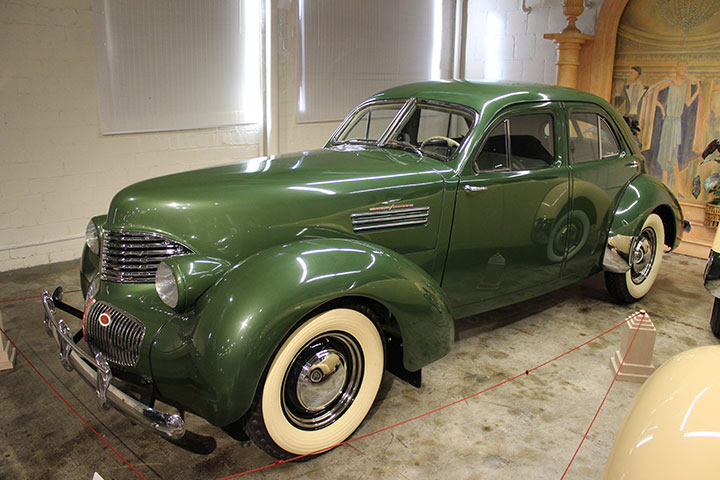
A 1941 Graham Hollywood Supercharged as seen
at the Auburn Cord Duesenberg Automobile Museum in Auburn, IN.
This was a very nice looking car, but production issues in the plant
lead to its demise. Author's photo.
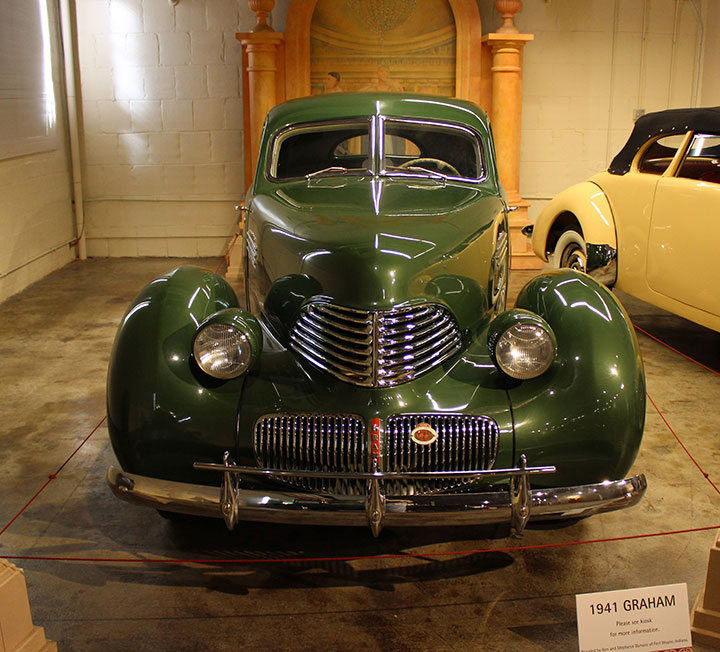
There were 1,378 built at a cost of $1,250
each in 1940-1941. It was the last vehicle produced by the company
before World War Two and also the
last Graham vehicle ever produced.
Author's photo.
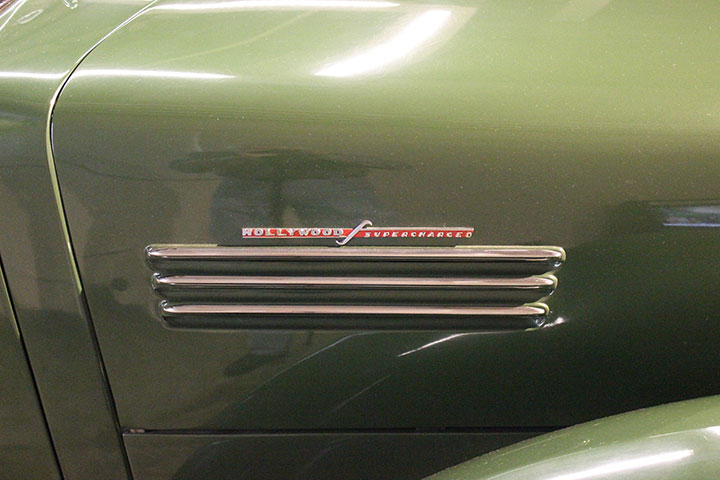
Author's photo.
Graham-Paige was created by the Graham
brothers, Joseph, Robert, and Ray when they purchased the Paige-Detroit
Motor Company in 1927. However, this was not the brothers' first
business endeavor in the fledging American automobile industry.
Their first business was an automobile glass manufacturer that they sold
that later became Libby-Owens-Ford. Then the brothers began
converting Model Ts into trucks and also modifying the Model TT trucks
built by Ford. Then in 1919, the brothers introduced their own
trucks known as Graham Trucks.
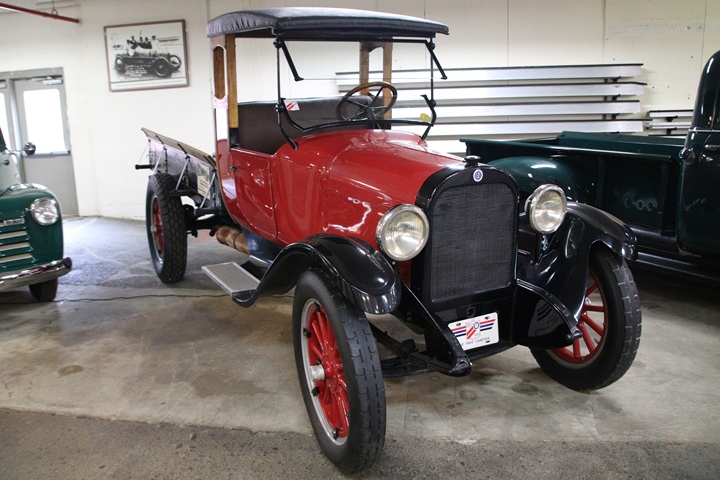
This 1923 Graham Brothers truck is on
display at the National Automobile and Truck Museum in Auburn, IN.
Author's photo added 1-17-2023.
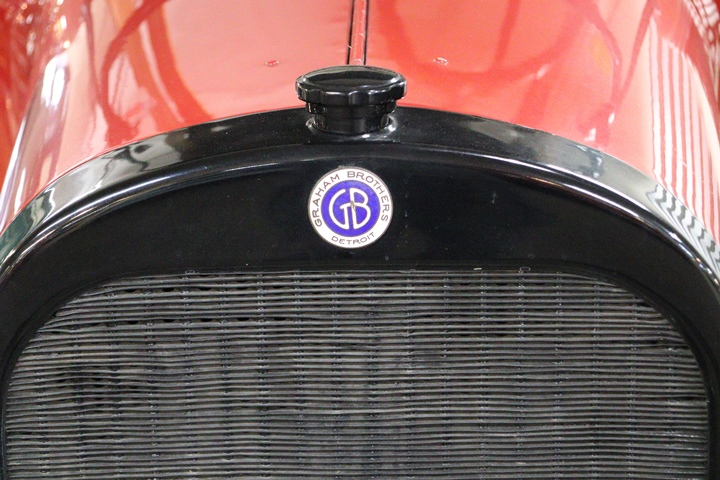
Author's photo added 1-17-2023.
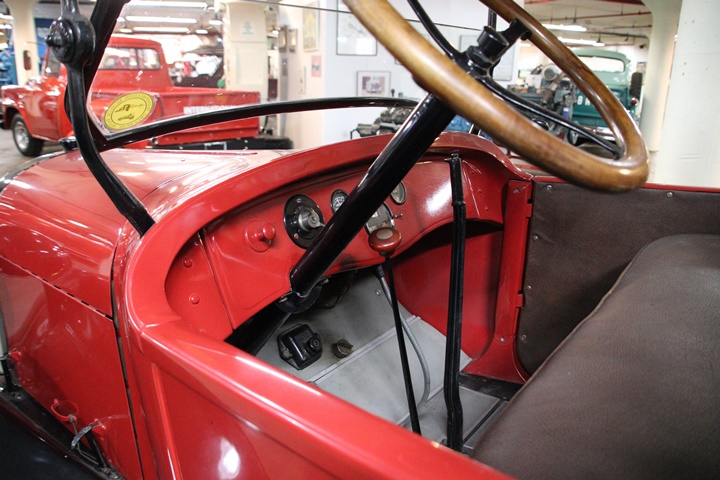
Author's photo added 1-17-2023.
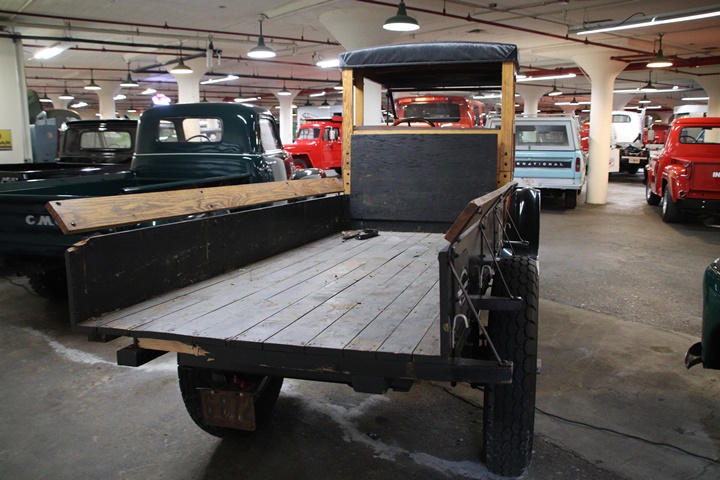
Author's photo added 1-17-2023.
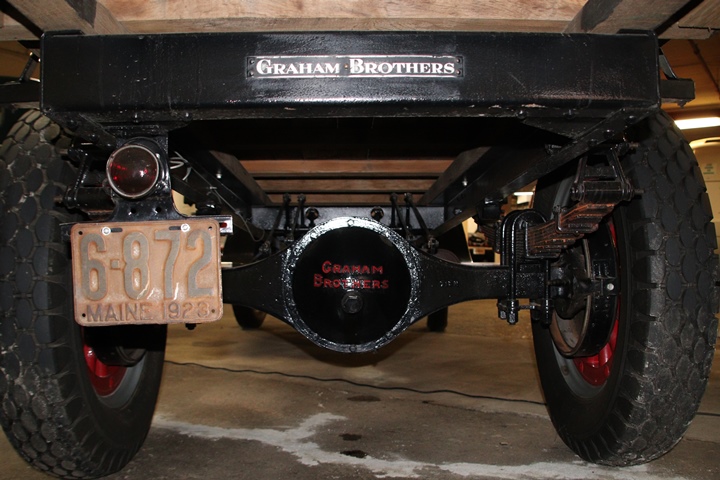
The truck is highly identifiable from the rear
as to which company made this vehicle. Author's photo added 1-17-2023.
In 1926, the Dodge Brothers purchased
all of the stock of the Graham Brothers and in 1930 all Graham Brother
trucks became Dodge trucks. With the money from the sales of their
stock to Dodge, the Graham Brothers then were able to purchase the
Paige-Detroit Motor Company and enter the highly competitive American
automobile industry.
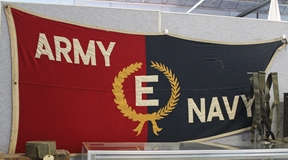
Graham-Paige won the Army-Navy "E" Award
once during World War Two.
The announcement of the award was made on June 22, 1943.
Graham-Paige
World War Two Products: Table 1 shows that the company had
$65,755,000 in major contracts largely from the U.S. Navy during World
War Two. The largest group of contracts was for several types of
amphibious tractors for the Navy. The four contracts for these
types of vehicles totaled $43,934,000 or 66.8% of the total value.
Contracts for amphibious tractor parts and equipment totaled another
$16,469,000 or 25%. The two sums added together totaled
$60,403,000 or 91.8% of all contracts. U.S. Navy contracts for
amphibious tractors and their parts dominated Graham-Paige's World War
Two output.
The next largest group of
contracts, also from the Navy, were six contracts totaling 2,021,000 for
torpedo parts which was 3% of the total major military contracts.
99.3% of the contracts were for the Navy. The three contracts for
the Army totaled $476,000.
Graham-Paige also was a
subcontractor to both the Wright Aeronautical Corporation and the
Packard Motor Car Company. In February 1941 Wright announced that
it had contracted with Graham-Paige for the manufacture of connecting
rods for its R-2600 aircraft engine. The contracted amount was $10,000,000 and the parts were for the new Wright engine plant
in Lockland, OH, north of Cincinnati, OH. Production of the R-2600
began at Lockland in June 1941 and continued through October 1945. Graham-Paige supplied
connecting rods for the 60,456
R-2600 engines made at Lockland. Beginning in
1945, Graham-Paige began furnishing components for the 1,866 Wright
R-3300 engines that were mounted on the B-29 Superfortresses.
The company also furnished
engine components to Packard for use in the Rolls-Royce V-1650 Merlin aircraft
engine and for the 4M2500 marine engines that powered the PT boats.
Landing Craft, Tracked
(LVT): Donald Roebling invented the LVT concept that he first
called an “Alligator.” When large orders and equipment changes
came in during the following years, Daniel Roebling subcontracted with
the Food Machinery Corporation (FMC) to fulfill the orders. Unfortunately, I have not yet been able to find a source
that gives the quantities of the different types of LVTs built by
Graham-Paige or the other manufacturers during World War Two. Table 2 shows
that the company was assigned 757 hull numbers for the LVT-4.
As noted above, the company
had four Navy contracts for amphibious tractors totaling $43,934,000.
From the contract and other information below, one can estimate
that number of LVT-1s and LVT-3s the company built. However, even
then, there is some conflicting information.
LVT-1 - 1,225 were built by
FMC, Graham-Paige, and St. Louis Car
from 1941-1943. The first application of this type was used at Guadalcanal
in August 1942.
It did not have a ramp.
The first LVT-1 built by
Graham-Paige was accepted by the U.S. Navy inspector on or about Jun
23, 1942. This and other LVT-1s built by Graham-Paige were
done so under U.S. Navy contract NOS-97579 for $1,643,000. While it is
unknown how much each LVT-1 cost, Table 2 shows that the Graham-Paige
LVT-4 cost $23,500. If one uses this value as a rough estimate of
the cost of an LVT-1, this calculates out to be 70 LVT-1s built by
Graham-Paige.
LVT-2 - 2,963 were
constructed by FMC, Graham-Paige,
Ingersoll Steel and Disc Division of Borg-Warner, and St. Louis Car from 1942-1944. This one did not have
a ramp either.
Table 2 shows that
Graham-Paige was contracted to build 757 LVT-4s under contract OBS-863
beginning in December 1942. However, Table 4 shows that production
of the LVT-4 did not begin until a year later, in late 1943.
Therefore, most likely, the LVT-4s were built under the supplemental
contract OBS-863S beginning in November 1943. Using this contract
for the LVT-4s, $14,448,000 divided by $23,500 equals 615 LVT-4s, and
not the 757 shown in Table 2. While the two are not equal, it
could very well have been that Graham-Paige had the difference of 142
cancelled in August 1945. The Navy cancelled 1,300 units between
all of its LVT-4 suppliers in August 1945 with the end of the war with
Japan.
Most likely contract OBS-863
awarded 12-1942 for $8,596,000 was for the LVT-2. Using $23,500
again as our estimated unit cost, one arrives at 366 LVT-2s built by
Graham-Paige during World War Two.
LVT-3 - 2,964 were built
by Graham-Paige and the Ingersoll Steel and Disc Division of
Borg-Warner. This had a rear ramp that allowed the troops to exit
and also allowed the vehicles to carry a jeep. These were built under
contract
OBS-1790 for
$19,247,000. Once again, using the $23,500 cost from
Table 2 as a guide, Graham-Paige built an estimated 820 LVT-3s
LVT-4 - 8,348 were
produced by FMC, Graham-Paige, and St. Louis Car
from 1943-1945. This also had a rear ramp that allowed the
troops to exit and also allowed the vehicles to carry a jeep.
Table 2 shows that Graham-Paige was contracted for 757 LVT-4s.
Table 1- Graham-Paige Motor
Corporation's
Major World War Two Contracts
The information below
comes from the "Alphabetical Listing of Major War Supply
Contracts, June 1940 through September 1945." This was
published by the Civilian Production Administration, Industrial
Statistics Division. This table added 1-17-2023. |
|
Product - Customer |
Contract Number |
Contract Amount |
Contract Awarded
Date |
Completion
Date |
| Ordnance
Material - Navy |
Nos-78910 |
$825,000 |
11-1940 |
3-1942 |
| Material
Ordnance - Navy |
Nos-8-496 |
$712,000 |
1-1941 |
11-1942 |
| Piece Parts -
Navy |
120-S-12551 |
$81,000 |
2-1941 |
11-1941 |
| Piece Parts -
Navy |
120-S-12536 |
$207,000 |
2-1941 |
2-1942 |
| Rods Levers -
Navy |
NOS-83267 |
$262,000 |
3-1941 |
9-1942 |
| Tractors -
Navy |
NOS-97579 |
$1,643,000 |
1-1942 |
9-1942 |
| Torpedo Parts
- Navy |
120-S-16751 |
$227,000 |
2-1942 |
7-1943 |
| Torpedo Parts
- Navy |
120-S-15857 |
$69,000 |
3-1942 |
2-1943 |
| Levers
Operating - Navy |
171-S-59321 |
$52,000 |
5-1942 |
10-1942 |
| Torpedo Parts
- Navy |
120-S-19594 |
$441,000 |
10-1942 |
5-1944 |
| Amphibian
Tractors LVT - Navy |
OBS-863 |
$8,596,000 |
12-1942 |
12-1943 |
| Engines -
Navy |
120-S-24124 |
$586,000 |
2-1943 |
4-1944 |
| Torpedo Parts
- Navy |
120-S-24125 |
$842,000 |
2-1943 |
4-1944 |
| Tractor Parts
- Navy |
XSS-25412 |
$449,000 |
3-1943 |
7-1943 |
| Valves - Navy |
120-S-22360 |
$80,000 |
5-1943 |
9-1943 |
| Torpedo Parts
- Navy |
120-S-22555 |
$280,000 |
6-1943 |
7-1944 |
| Rental
Services - Army |
56-QM-1033 |
$60,000 |
7-1943 |
6-1944 |
| Operating
Levers - Navy |
171-S-68826 |
$50,000 |
11-1943 |
3-1944 |
| Amphibian
Tractors LVT - Navy |
OBS-863S |
$14,448,000 |
11-1943 |
11-1944 |
| Torpedo Parts
- Navy |
120-XSO-26564 |
$162,000 |
5-1944 |
12-1944 |
|
Landing Vehicles LVT3 - Navy |
OBS-1790 |
$19,247,000 |
7-1944 |
8-1945 |
| Landing
Vehicle Equipment- Navy |
OBS-2138 |
$360,000 |
8-1944 |
6-1945 |
|
Landing Vehicle Parts - Navy |
OBS-1991 |
$12,420,000 |
10-1944 |
7-1945 |
| Shot Bodies
76mm T4E20 - Army |
200180-ORD-8369 |
$84,000 |
12-1944 |
1-1945 |
| Shot 76mm
T4E20 - Army |
200180-ORD-10010 |
$332,000 |
2-1945 |
1-1946 |
| Total |
|
$65,755,000 |
|
|
Table 2 - Graham-Paige LVT-4 Contracted
Production
Information from "LVT(4) Amtrac - The Most Widely Used
Amphibious Tractor of World War II" by David Doyle |
|
Number Contracted |
U.S. Navy Hull Numbers |
U.S. Navy Contract Number
|
Cost per LVT-4 |
|
25 |
C-19395 - C-19419 |
NObs 863 |
$23,500 |
|
94 |
C-49953 - C-50046 |
NObs 863 |
$23,500 |
|
347 |
C-58462 - C-58808 |
NObs 863 |
$23,500 |
|
291 |
C-63499 - C-63789 |
NObs 863 |
$23,500 |
| 757 |
Total |
|
|
Table 3 - Total LVT-4 Contracted
Production
Information from "LVT(4) Amtrac - The Most Widely Used
Amphibious Tractor of World War II" by David Doyle published
2020 |
|
Company |
Number Contracted |
Percentage |
|
FMC Riverside, CA |
1,876 |
19.4% |
|
FMC San Jose, CA |
3,451 |
35.6% |
|
FMC Lakeland, Lakeland, CA |
1,825 |
18.9% |
|
FMC Sub-Total |
7,152 |
74% |
|
St. Louis Car Company |
1,698 |
17.6% |
|
Graham-Paige |
757 |
7.8% |
|
Unknown |
60 |
.62% |
|
Total |
9,667 |
100% |
|
Cancelled LVT-4s in August 1945 |
1,838 |
|
|
Total Production |
7,829 |
|
Graham-Paige was contracted to build
757 out of the 9,667 LVT-4s built during World War Two. With the
termination of hostilities in August 1945, 1,300 units were
cancelled between the four companies building the LVT-4. It
appears that Graham-Paige had 142 of the 1,300 LVT-4s cancelled at
the end of the war as noted above.
Table 4 - World War Two LVT Production
From "Amtrac: US Amphibious Assault Vehicles by
Steven Zaloga published 1987 |
|
Type |
1941 |
1942 |
1943 |
1944 |
1945 |
Total |
|
LVT-1 |
72 |
851 |
302 |
|
|
1,225 |
|
LVT(A)-1 |
|
3 |
288 |
219 |
|
510 |
|
LVT-2 |
|
|
1,540 |
1,422 |
|
2,962 |
|
LVT(A)-2 |
|
|
200 |
250 |
|
450 |
|
LVT-3 |
|
|
1 |
733 |
2,230 |
2,964 |
|
LVT-4 |
|
|
11 |
4,980 |
3,360 |
8,351 |
|
LVT(A)-4 |
|
|
|
1,489 |
401 |
1,890 |
|
LVT(A)-5 |
|
|
|
|
269 |
269 |
|
Totals |
72 |
854 |
2,342 |
9,093 |
6,260 |
18,621 |
While the U.S. Navy was the military
organization that contracted for the LVT-4, 74% were transferred to
the U.S. Army. The Army used most of them in Europe for river crossings, many of
them under fire.
The following table shows the increased use
of LVTs as they became more
available during the U.S. Navy's Central Pacific campaign during World War Two. LVTs were utilized at Guadalcanal for the
transport of supplies to the island, not in the initial assault waves.
As the war continued, the LVTs became very important where the islands
had coral atolls that prevented the 36-foot wooden landing craft such as
the LCP(L)s, LCVs, LCP(R)s, and LCVPs from crossing. Even with
their low draft, the landing craft would get hung up on the atolls.
The LVTs with their tracks could cross over the reef. A shuttle
system was instituted where the wooden landing craft would bring marines
and soldiers from the troop transports to the atoll. There, the
marines and soldiers would transfer to the LVTs which would then take
them to the beach. Transfer of the troops at the reef called for
previous training by all involved to safely and efficiently make the
troop transfer. Add a heavy surf and it became an even more
dangerous endeavor than normal. Neither Iwo Jima nor Okinawa had
reefs, but by the end of the war the LVT had become an important part of
the landing assault forces.
|
Table 5 - Number of LVTs
and LVT(A)s used in the Assault Waves during the Central Pacific
Campaign
The first LVT(A)s were armed with 37mm cannons and the later
ones with 75mm howitzers. These provided close-in fire
support for the LVTs as they made their run-in to the beach.
It is unknown whether Graham-Paige made this type vehicle. |
|
Island |
Date |
LVT |
LVT(A) |
|
Guadalcanal |
8-1942 |
0 |
0 |
|
Tarawa |
11-1943 |
87 |
0 |
|
Saipan |
6-1944 |
594 |
138 |
| Guam |
7-1944 |
381 |
75 |
|
Tinian |
7-1944 |
453 |
66 |
|
Peleliu |
9-1944 |
223 |
72 |
| Iwo
Jima |
2-1945 |
380 |
68 |
|
Okinawa |
4-1945 |
872 |
92 |
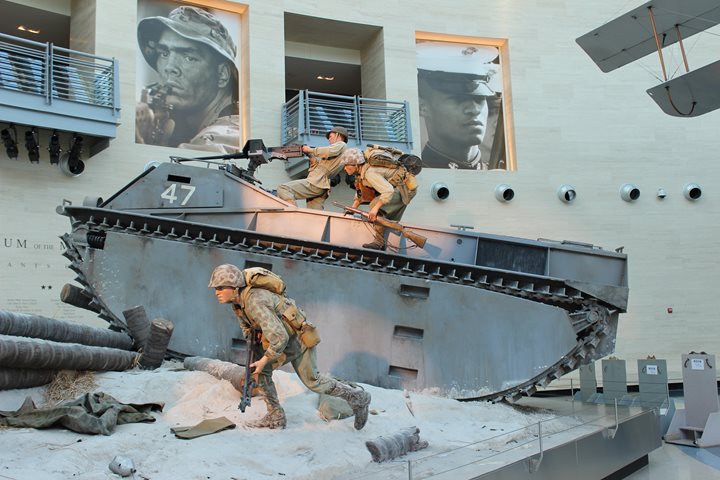
Graham-Paige built an estimated 70 of the 1,225
LVT-1s built from 1941 to 1943. This diorama at the
National Museum of the USMC depicts an LVT-1 going over a log barricade
at Tarawa. Tarawa was the first use of the LVT type amphibious
tractor for a combat assault. Author's photo added 9-30-2016.
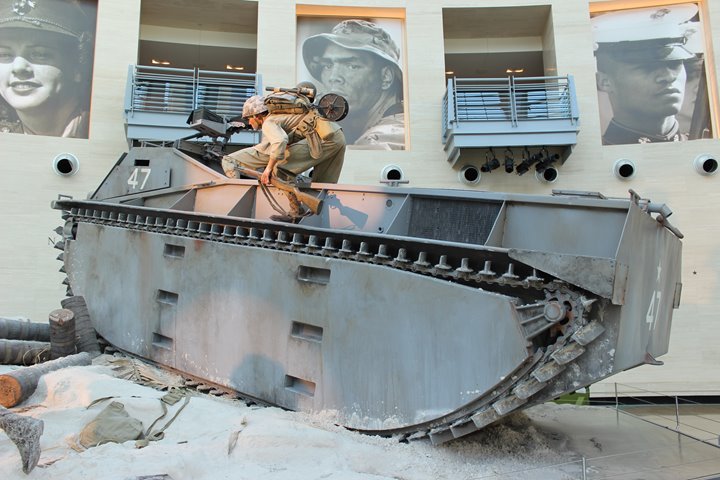
This and the following photo show that the rear is a solid piece with no
ramp. The Marines had to go over the side as shown here and jump
down eight feet to the sand. Author's photo added 9-30-2016.
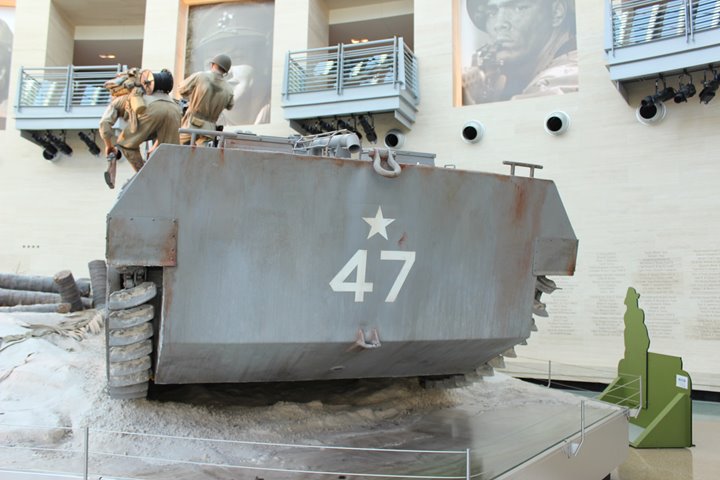
Author's photo added 9-30-2016.
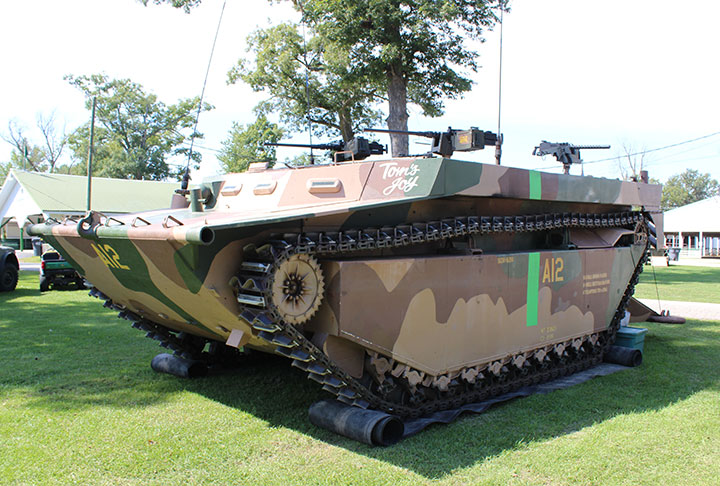
This is a 1945 LVT-4 "Water Buffalo"
that was built by St. Louis Car, one of the two other manufacturers of
this type besides Graham-Paige. This one is a movie star, having been
used in the 2005 movie "Flags of our Fathers". Author's photo from
the 2014 Portland, IN Military Vehicle Show.
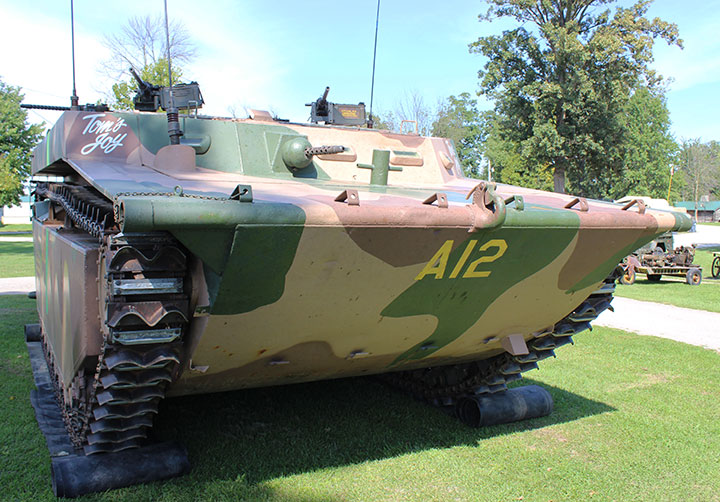
According to Table 2, Graham-Paige built 757
of the LVT-4s for the war effort. Note the internal and external
armament. While this is not a Graham-Paige-built unit, it shows the huge size
and complexity of building this landing craft. Author's photo
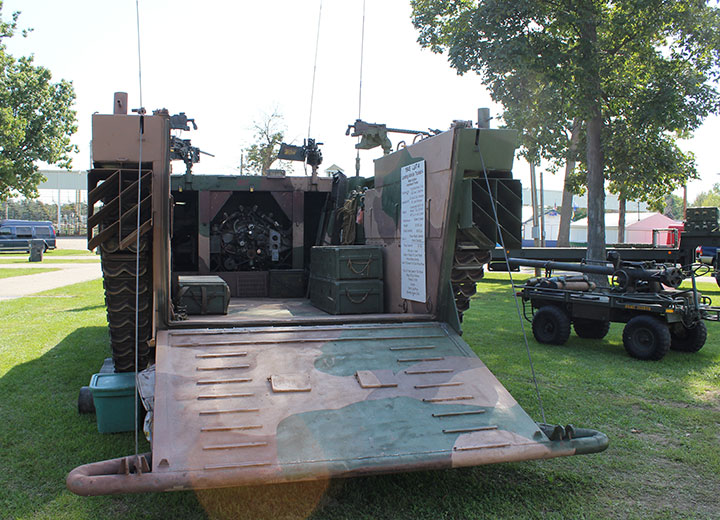
The LVT-4 was the first in the series to
have a ramp. On the LVT-1 and LVT-2, the soldiers and marines had to
make an eight foot jump over the side to get out. The LVT-4 could
also carry small
vehicles. Author's photo.
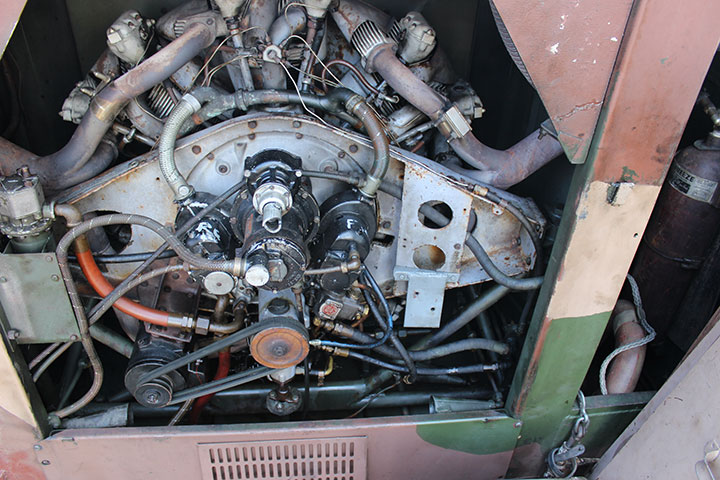
The LVT-4 was powered by a Continental
R-670-9A seven cylinder radial aircraft engine producing 250 hp.
The radial engines, originally designed to operate at relatively
constant speeds for aircraft, did not work out well when having to
constantly change RPMs while being shifted through the five speeds of the
Spicer transmission. Author's photo.
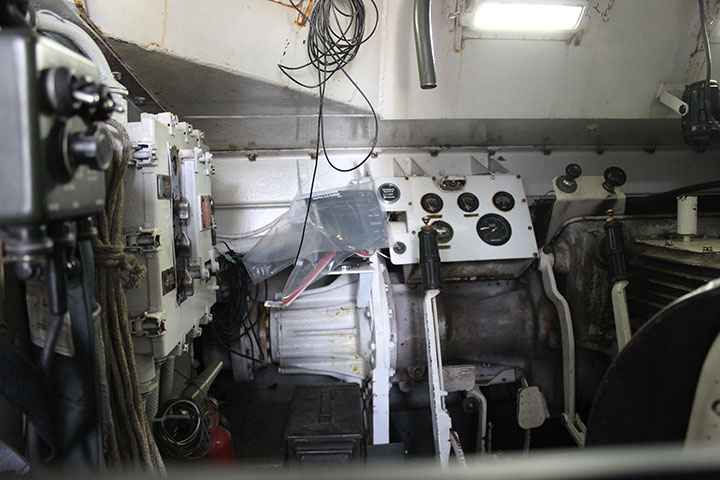
The driver's station with the Spicer transmission is just visible to the
right. The powered axle is in front of the controls and instrument
panel. Author's photo.
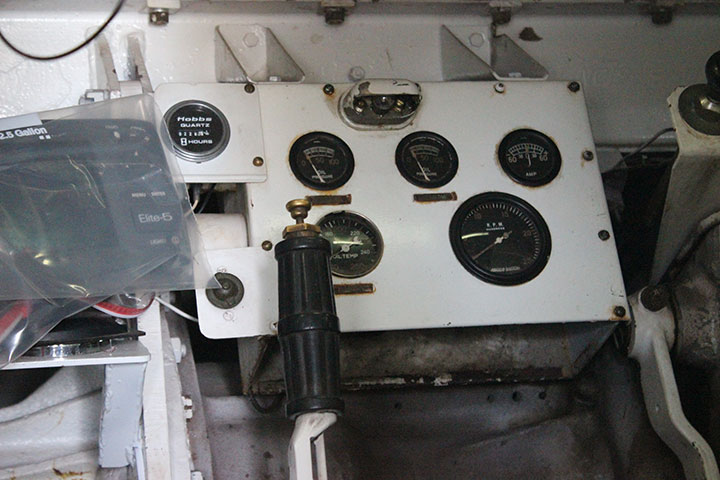
The instrument panel inside the LVT-4.
Author's photo.
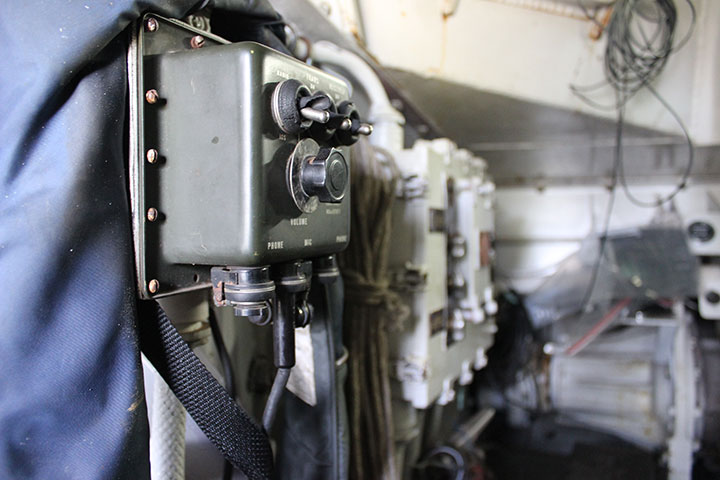
The radio control box is on the left.
Author's photo.
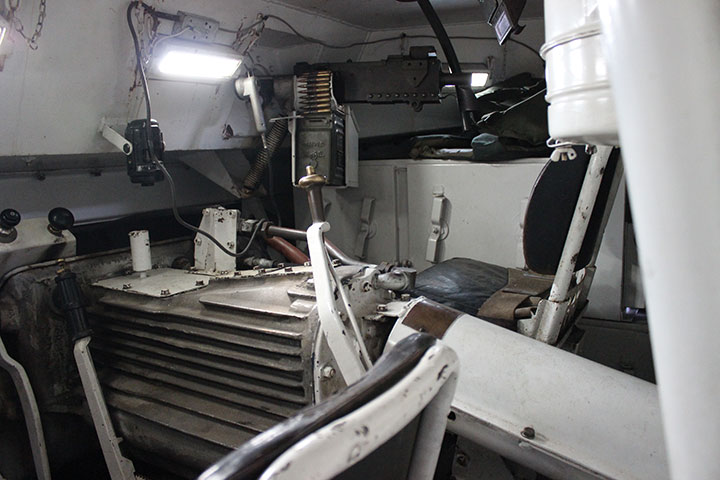
The gunner's position with the .30 caliber
machine gun. In this photo, one can see the transmission better and the
covering over the driveshaft from the engine. Author's photo.
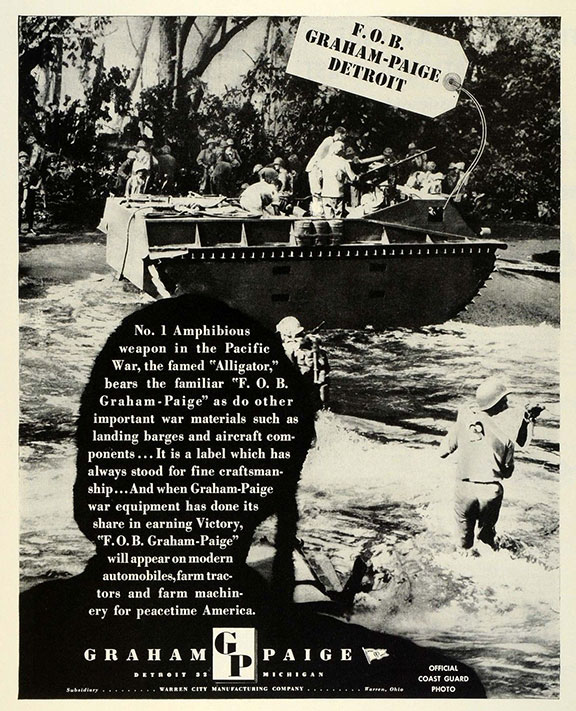
This photo shows an LVT-1 on an island in
the Pacific.
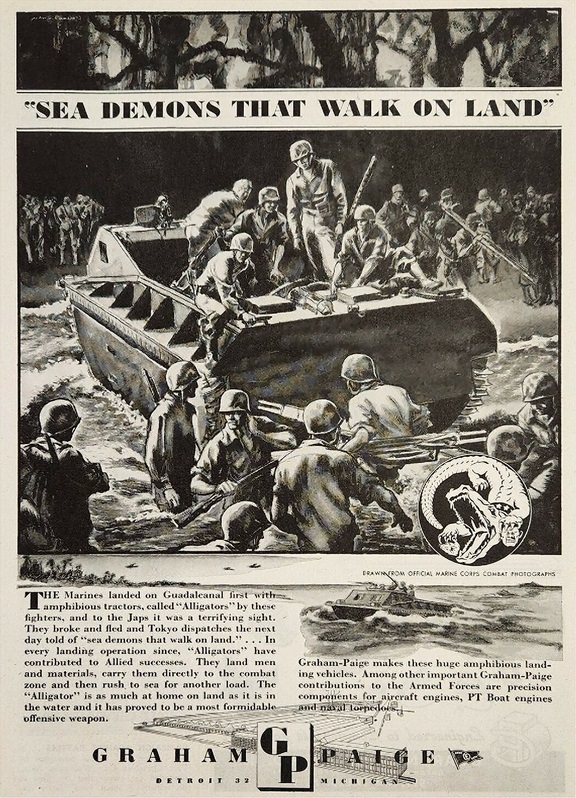
This ad notes that LVT-1s were with the First
Marine Division when it landed on Guadalcanal on August 7, 1942. The
indirect implication is that Graham-Paige-built LVT-1s were at the
initial landings at Guadalcanal. However, the first
Graham-Paige-built LVT-1 did not come off the assembly line until June
23, 1942. At that time, the First Marine Division was already in
the South Pacific. Its amphibious tractor battalion had already
formed in February 1942, and had its complement of tractors.
Advertisement added 1-17-2023.
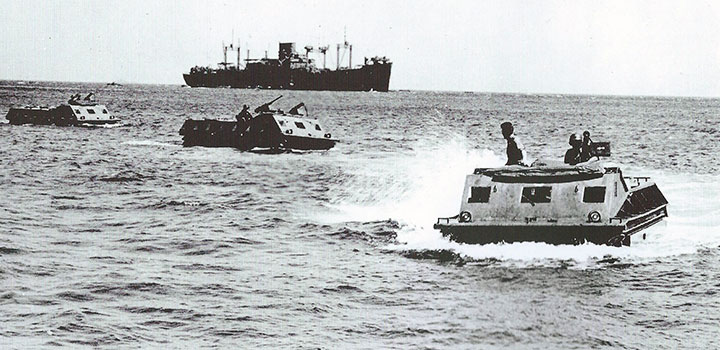
The first use of the LVT was at the landings at
Guadalcanal on August 7, 1942, where they were used to bring supplies
ashore. Graham-Paige LVT-1's
were not part of the Guadalcanal invasion. Photo added 4-14-2015.
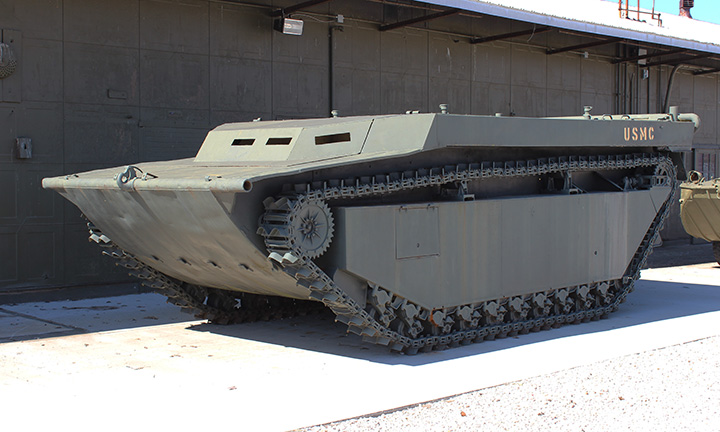
This is another LVT-4 that is on display at
the Indiana Military Museum in Vincennes, IN. No information is
known on which of the three companies, FMC, Graham-Page, or St. Louis
Car, actually built this particular unit. Author's photo.
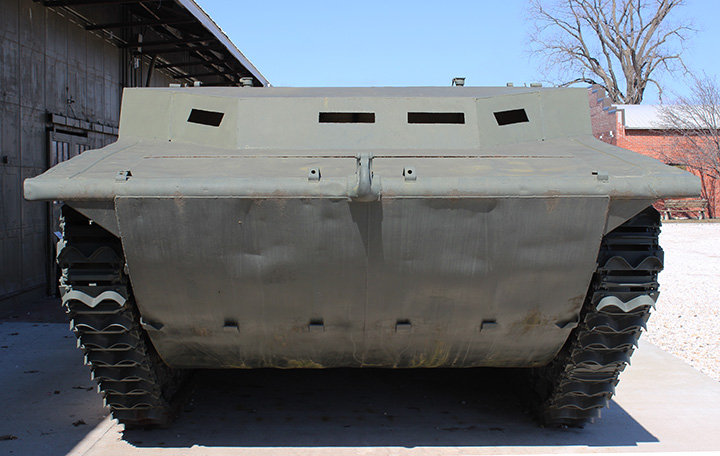
Author's photo.
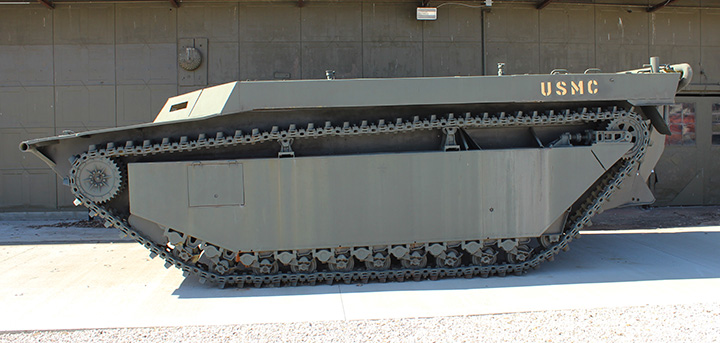
The LVT-4 is 8 feet tall. It differs from the earlier
LVT-1 and LVT-2 in that
it has a stern ramp, and the troops did not have to make the long 8 foot
jump to the beach upon landing. Author's photo.
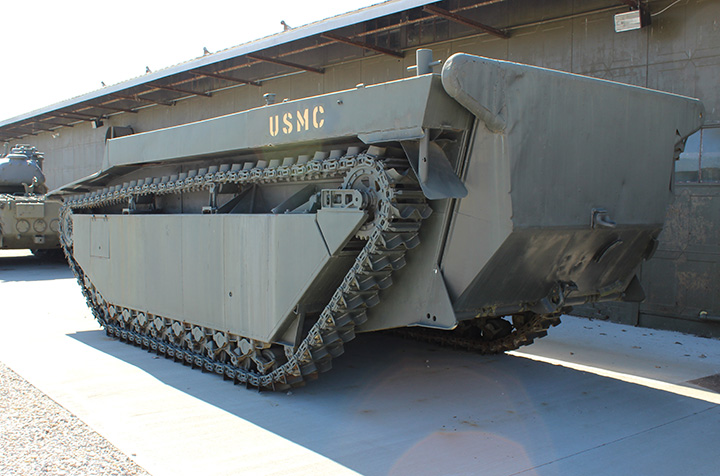
Author's photo.
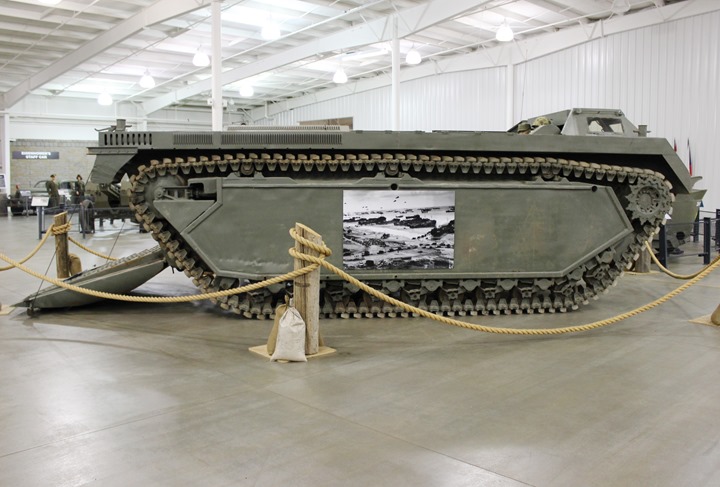
Graham-Paige built an estimated 820
Borg-Warner designed LVT-3s. A total of 2,964 were built
during
World War Two. Author's photo added 12-2-2021.
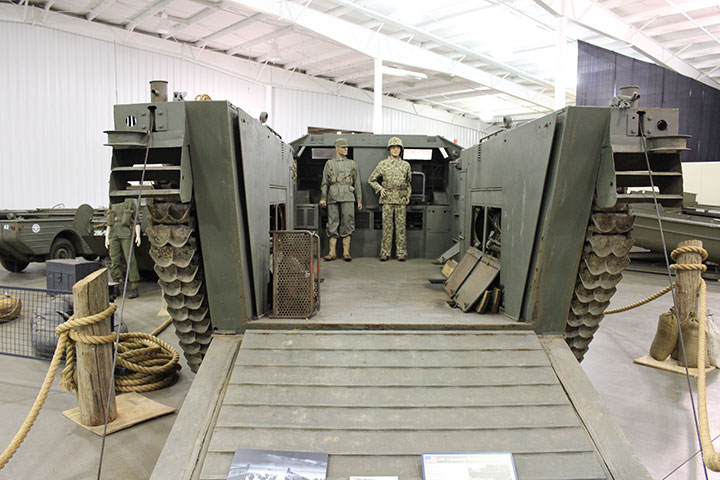
Author's photo added 12-2-2021.
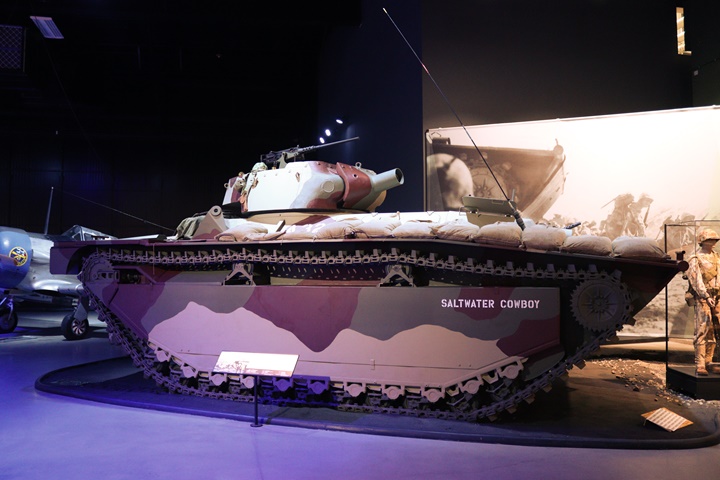
This LVT-(A)4, which is armed with a 75mm
howitzer, is on
display at the American Heritage Museum in Hudson, MA. Current
historical data does not provide information on which company or
companies built this type of vehicle. Graham-Paige could have
manufactured some of these. Author's
photo added 12-2-2021.
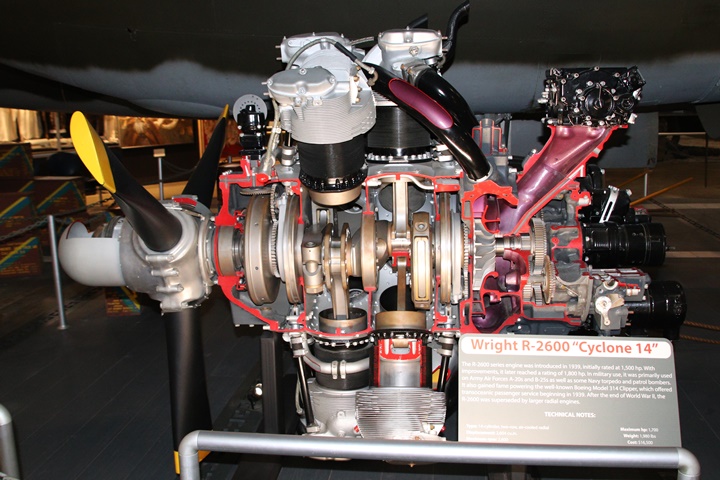
This cut-away of a Wright R-2800 is on
display at the National Museum of the United States Air Force in
Riverside, OH. Graham-Paige furnished connecting rods for these
engines that were built at the Lockland, OH Wright Engine plant.
Author's photo added 1-17-2023.
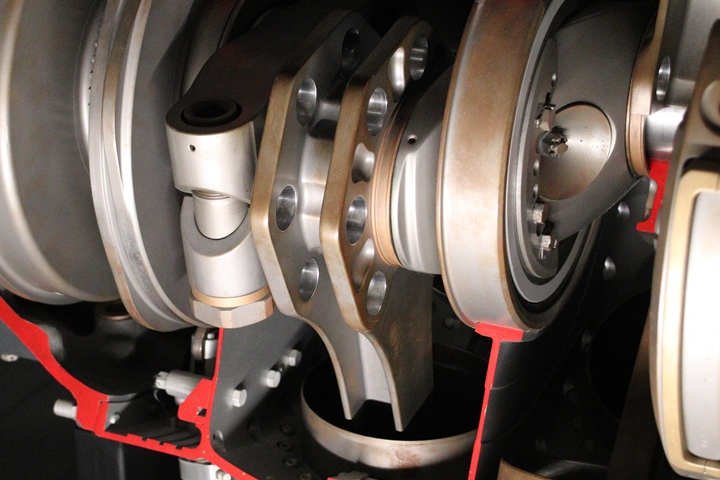
This image shows the connecting rod mounted
to the engine's crankshaft and one of the fourteen pistons. There
were a total of 60,456 R-2600 engines made at the Lockland, OH plant.
If Graham-Paige was the only supplier of the connecting rods for this
engine, it would have produced 846,384 units during the war.
Author's photo added 1-17-2023.
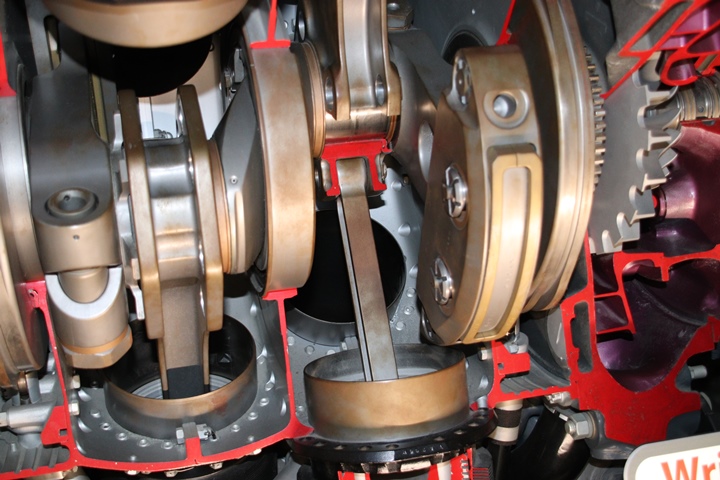
This image shows several connecting rods in
the R-2600 engine. Author's photo added 1-17-2023.
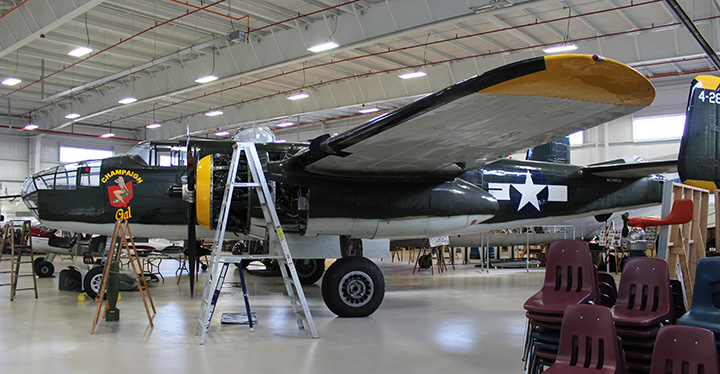
One of the big uses for the R-2600 engine
was in the B-25 "Mitchell" twin engine bomber. This is B-25
"Champaign Gal" at the Champaign Air Museum in Urbana, OH.
Author's photo added 1-17-2023.
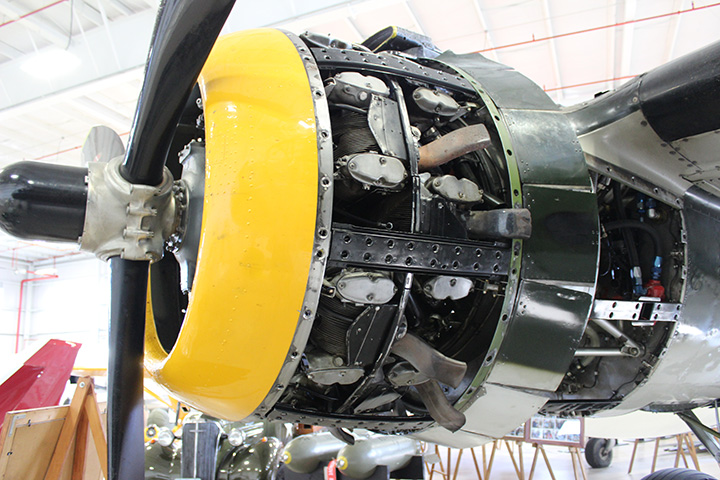
The R-2600 had two rows of seven cylinders
each. Author's photo added 1-17-2023.
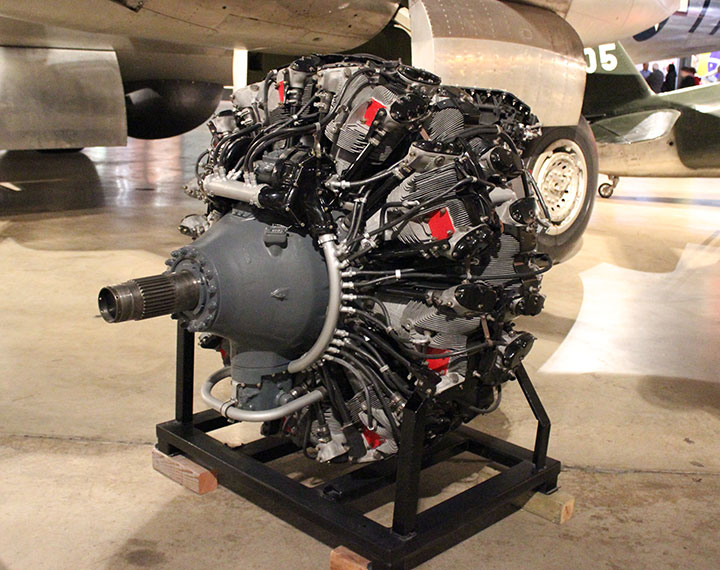
This is a Wright R-3350-23 Duplex Cyclone
engine that was used on the B-29 project during World War Two.
Graham-Paige supplied eighteen connecting rods each for the 1,866 Wright
R-3300 engines built in Lockland, OH. This would have totaled
33,588 parts for the engine. Author's photo added 1-17-2023.
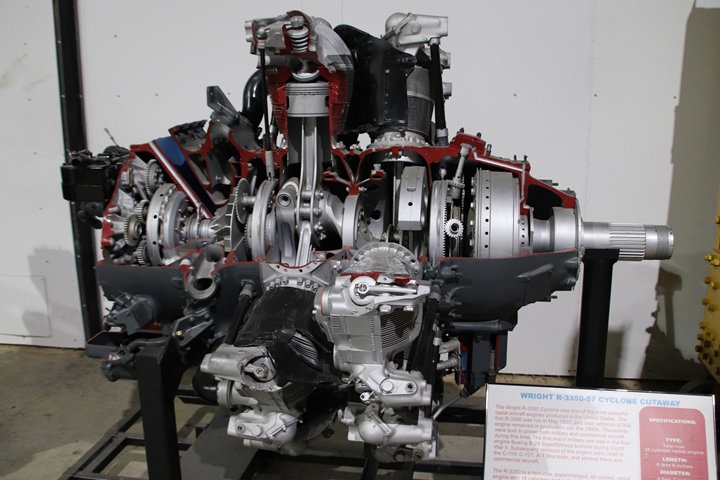
This cut-away of a R-3350 at the Museum of
Aviation Robbins AFB, GA shows the complexity of the engine.
Author's photo added 1-17-2023.
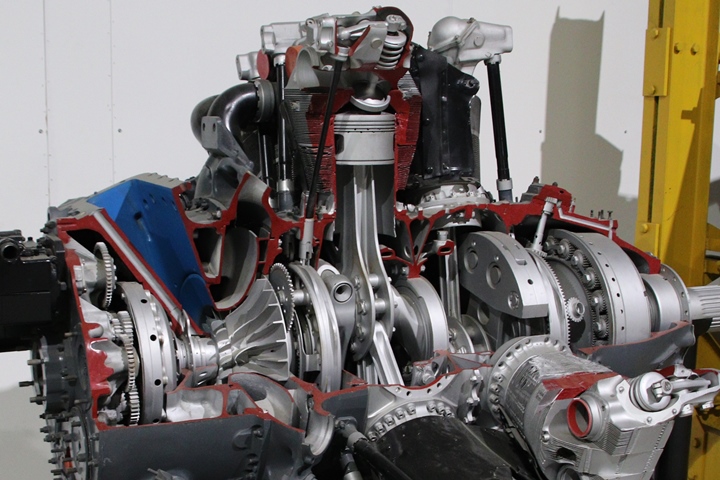
The three of the eighteen connecting rods
can be seen in this display. Author's photo added 1-17-2023.
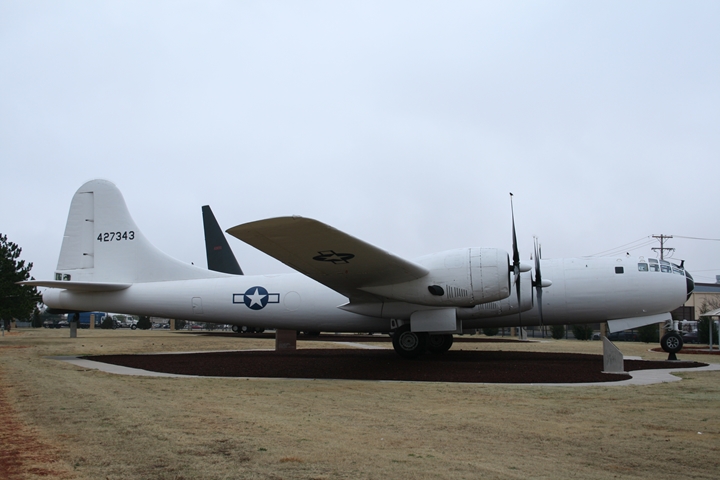
This Martin-built B-29 44-27343, seen here at the Tinker AFB Heritage
Display, came off the assembly line at Omaha, NE in May 1945.
Author's photo added 1-17-2023.
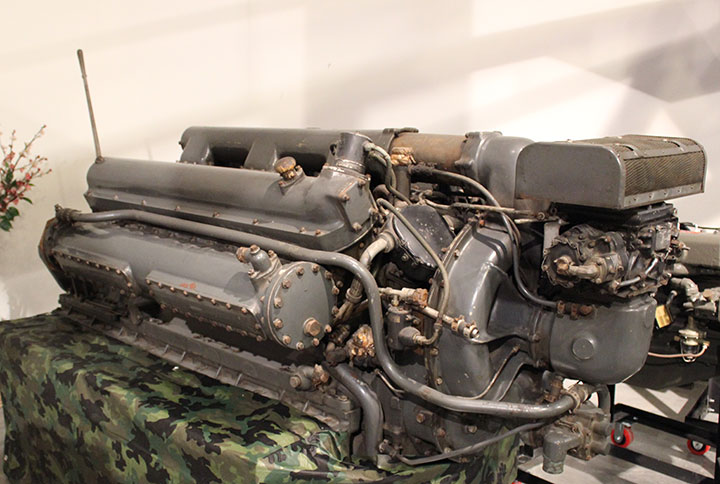
Here is a Packard 4M2500 Marine Engine for which Graham-Paige built
precision machined parts. PT boats used three of these engines;
and pilot rescue boats used two engines. Author's photo.
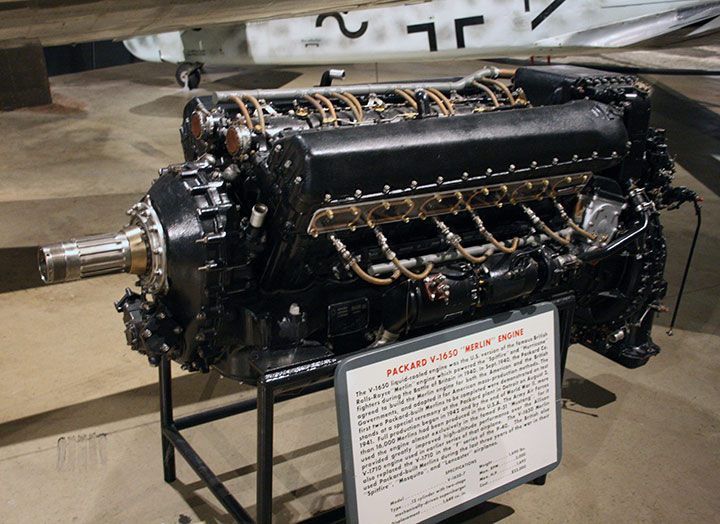
This photo shows a Packard-built V-6150, which is the US version
of the famous Rolls-Royce-built “Merlin” aircraft engine. By 1942,
Packard was in full production of both US and British versions for which
Graham-Paige also built parts. Author's photo from the National Museum
of the United States Air Force in Riverside, OH.
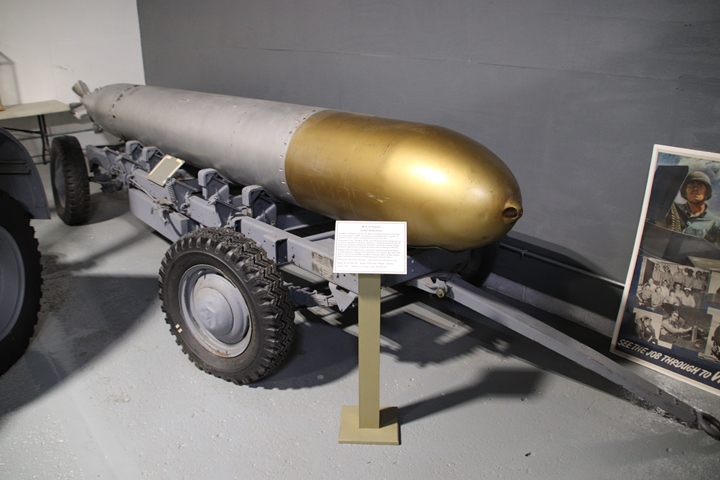
Graham-Paige had six major contracts from
the U.S. Navy for torpedo parts. These five contracts totaled
$2,021,000. The trailer has a Mark 14 torpedo on it.
Author's photo added 1-17-2023.
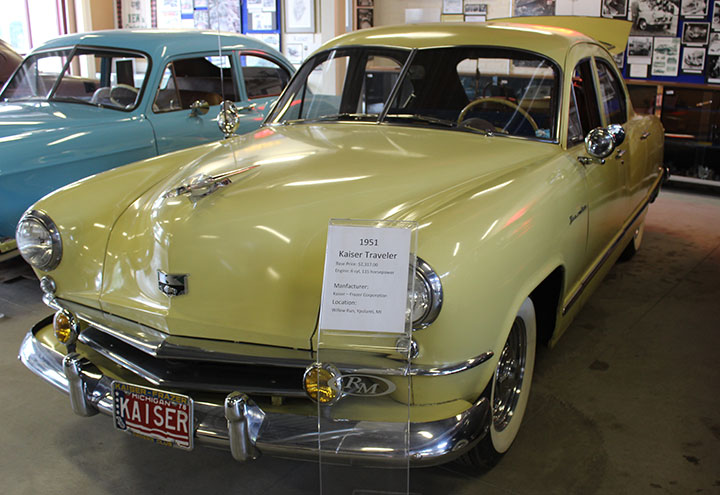
This 1951 Kaiser Traveler was produced by
Kaiser-Frazer after it purchased the automotive assets of Graham-Paige.
This vehicle was built in the Willow Run plant a couple of miles to the
east of the Ypsilanti Automotive Heritage Museum in Ypsilanti, MI where
it now resides.
Author's photo.
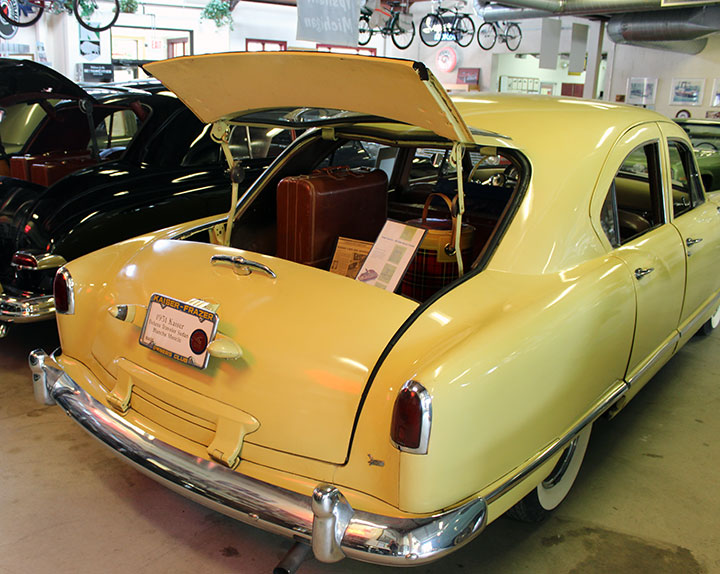
Author's photo.
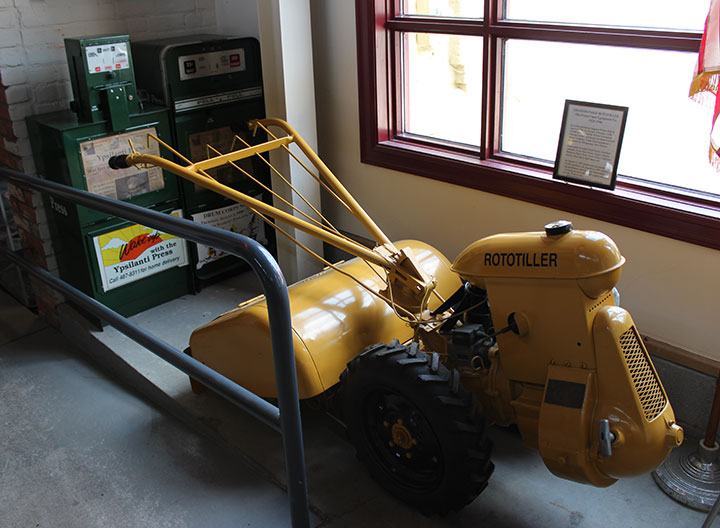
This 1947 Frazer B1-6 Rototiller was built
by the Farm Division of the Graham-Paige Motors Corporation in the
Willow Run Plant under license from the Rototiller Company of Troy, NY. Author's photo from the Ypsilanti Automotive Heritage
Museum in Ypsilanti, MI.
The Graham-Paige Plant:

This image and the one below were taken from
Graham-Paige World War Two advertisements. They show the general
layout of the huge complex. Image added 1-17-2023.
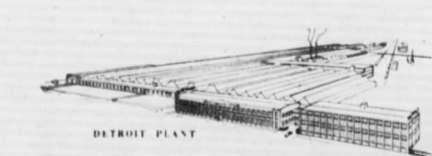
The Google Map Satellite views below show
that the office building in the right of the above two images still exists.
The long building in the far left of the image also still exists.
Image added 1-17-2023.
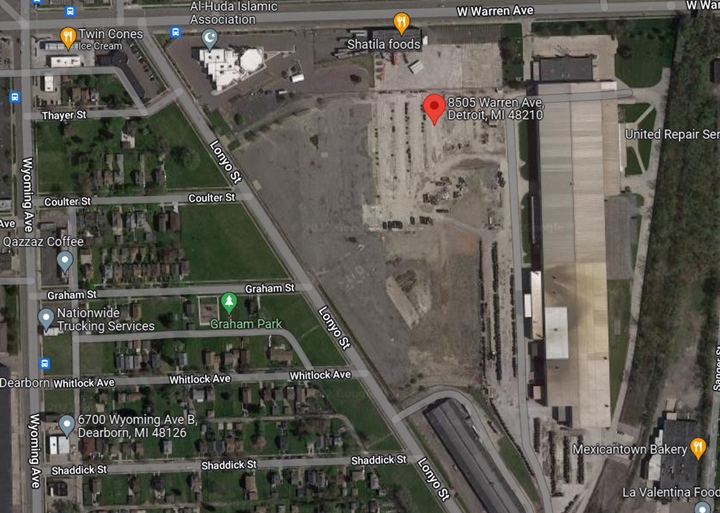
Graham-Paige was located at 8505 Warren
Avenue in Detroit, MI. Wyoming Avenue to the west of the plant is
the dividing line between Detroit and Dearborn, MI. This Google
Maps Satellite view shows the long building on the east end of the
complex is still in use. Image added 1-17-2023.
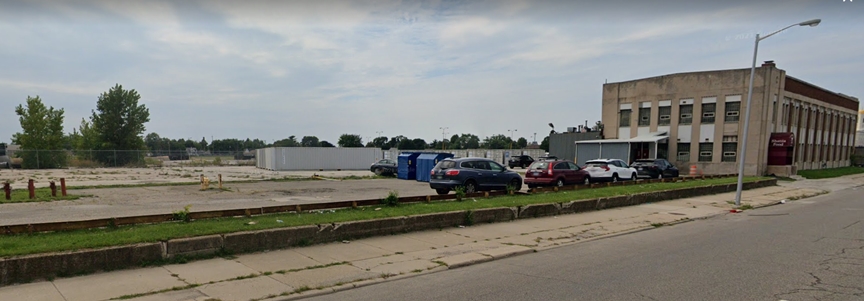
This view shows the location of the main
plant
which was razed. The east end of the office building is in the
right side of the photo. Google Maps Street View image added
1-17-2023.
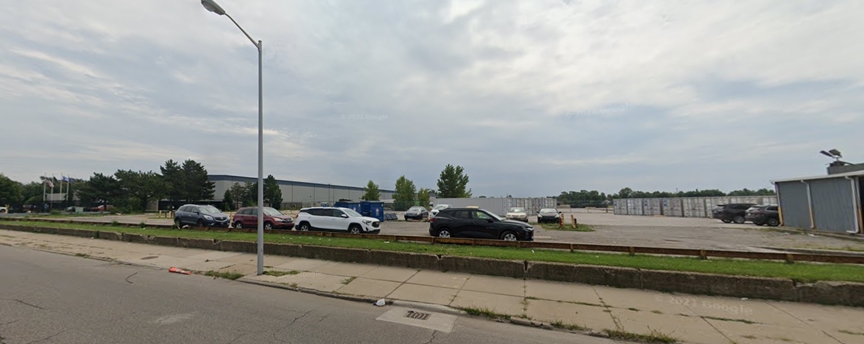
This view shows more of where the main plant was located. The long
factory building can be seen in the left of the photo. It has been
re-purposed for current use. Google Maps Street View image added
1-17-2023.
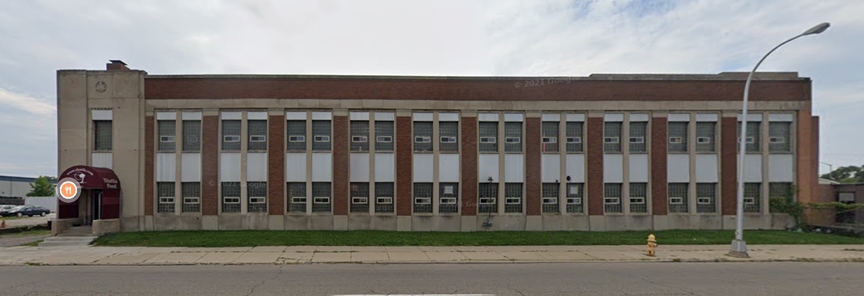
The former Graham-Paige office building is in very good condition.
It is now a restaurant. Google Maps Street View image added
1-17-2023.
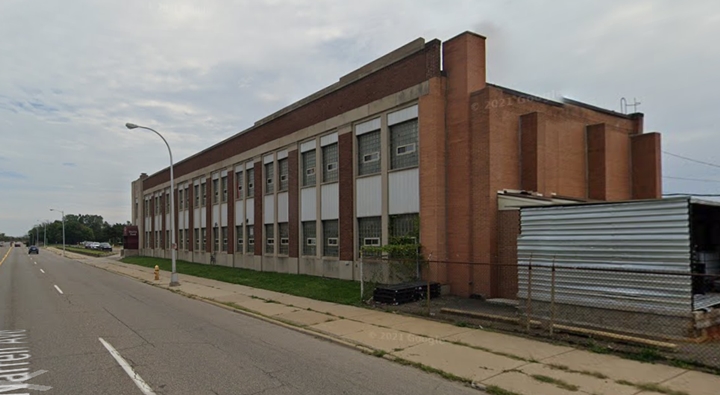
Google Maps Street View image added
1-17-2023.
|



















































